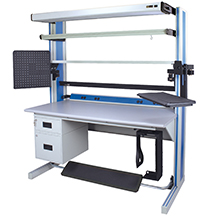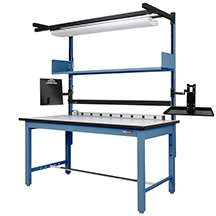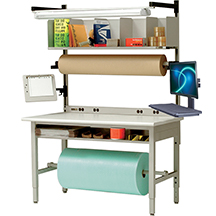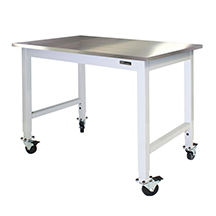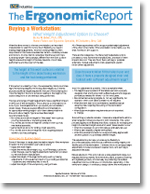Allocating Tasks: Human or Machine?
By Joy M. Ebben, Ph.D, CPE
Human Factors and Ergonomic Specialist, IAC, a Division of Treston, Goodyear, Arizona
How do managers make informed decisions about allocating tasks to humans and robotics equipment? Some functions can be performed only by humans because they require high level decision-making, compared to machine-only functions such as water-jet cutting. Functions that can be performed by either humans or machines present the most difficult choices for the manufacturing manager. The wrong decision could lead to lower productivity or quality, unnecessary costs, and accidents.
Task Allocation Guidelines
Guidelines for allocating tasks are provided by Anil Mital in International Journal of Industrial Ergonomics, August 1994. Briefly, functions should be performed by machines when the tasks have:
- Design accuracy, consistency and tolerance requirements
- Requirements that humans are incapable of performing (high-speed calculations, laser drilling)
- Speed and high-production volume requirements
- Size, force, weight and volume requirements (materials handling)
- Hazardous work aspects (certain kinds of welding and painting)
- Special requirements (contamination prevention or unique environmental conditions).
Some functions should be performed by humans because the tasks have:
- Information acquisition and decision-making needs (supervision, some forms of diagnostics and inspection)
- High-level skills (computer programming)
- Specialized manipulation, dexterity and sensing needs (adjust to differences in part tolerances, visual inspection of nonstandard components)
- Space limitations (work that must be done in narrow and confined spaces)
- Situations involving poor reliability equipment or where equipment failure could be catastrophic
- Activities for which technology is lacking.
For tasks that could be performed by either human or machine, consider these for influences:
- Information processing, decision making, planning and experience levels. Tasks that require high levels of cognitive processing or experience are appropriate for humans.
- Physical requirements. What are these risks of incurring musculoskeletal disorders? Are the weight, reach, range of motion, force, dexterity, physical and visual accessibility, frequency and posture requirements appropriate?
- Safety. Could a human operator be injured? Are there mechanical (high speed, sharp edges), environmental (noise, heat), electrical, chemical, fire or explosive hazards?
- Economics. Determining whether a manual or automated option is most economical requires cost modeling. Both solutions incur different annual costs for workstation or machinery, equipment installation, personal injury and training. In addition, a manual solution has direct and indirect labor costs; while automation has annual costs for maintenance, setup and energy.
Ergonomics' Role
Will the task be satisfying to employees? Sometimes it is better to assign a monotonous human task to a machine.
Analyze the criteria described to choose the best option for specific tasks. Most managers choose a hybrid solution combining people, machines and computers over full automation. For functions that will be assigned to a human, the related processes, tasks and workstations must be designed as an optimized total system. The goal is to provide tools and a workplace in which the human can perform efficiently, safely and with job satisfaction.
The last step is to assign people appropriately and fine-tune their workplaces around cognitive, physical and safety factors.
 Buy Online Now!
Buy Online Now!
 Buy Online Now!
Buy Online Now!


